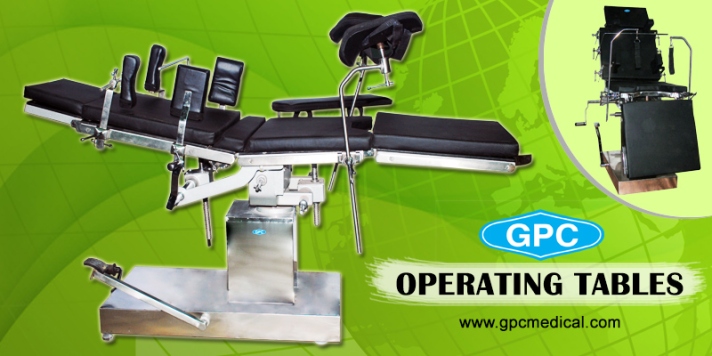Operating tables are a staple requirement for a surgery or medical procedure. It is as important as the doctor. Having been present since the 19th century, operating tables have evolved a lot with technology and with the evolution; there have been different types of operating tables developed for different kinds of surgeries.
One crucial side of operating tables is that does it stay the same in every case and provide the patient immense comfort and be easy for the doctor to use according to the surgery. The solution to providing the right table is to know and understand what is needed when and use it accordingly. A head trauma case would require a neuro-based table rather than a general surgery operating table.
Types of Operating Tables:
General Surgery Table:
This is the most commonly known tables and is best suited for general surgery and smaller operations. It allows easy patient contact. But what the table must have is easy accessibility and adjustment. To be able to adjust the table high or low and to allow the doctors to have focus and access to the part to operate on, so there must be good angle adjustment. It should also have imaging support as surgeons are largely using minimal invasive techniques, especially in general operations. Great advancements have also been made in size with the availability of sizes for infants, children, adults and even obese patients.
Neurology Table:
These tables have also been especially developed that are of great help in head traumas. It provides great access to the head only and designed as such that the rest of the body and neck area lay comfortably of the patient. These operating tables also are designed to give doctors particular control over their patients’ movement. These tables also have a variety of positioning options as required by the surgery like lateral slide and tilt, elevation and back section too.
Orthopedic Tables:
These are entirely different and very important. Fracture tables are entirely different that help to fix fractures of different part of the body. Then there are different tables for hip replacements, rib cage and lung are surgeries. One important aspect for these tables is to have plain access for image intensifiers and X-rays to see development and precision.
Urology/Cysto Tables:
Urology, cyst-based and gynecology tables are entirely different. They need to be comfortable, primarily and need adjustment options and angles for the doctor as these positions may be painful and even awkward. There needs to be less movement and tray options for quick treatment and access.
With all of the above mentioned types, there are also types based on area specification, like types of cardio based operating tables and there are further kinds of these tables. They need to be technologically advanced. Have arm resting options for the doctors and staff for longer procedures and hand rest. They also need to be accessible to radiology and x-rays as to wasting less time. And with the rise of robotic surgeries which are still being tested, there is a need of hydraulic tables that accommodates as per the patient’s body, incision and robot’s sleek movement.
Looking for world-class Hospital Furniture at best price??? CLICK HERE

